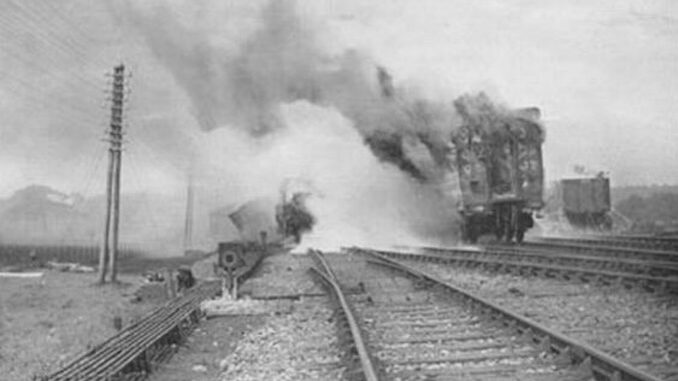
The Quintinshill rail disaster of May 22, 1915, is the worst in British history, resulting in over 227 fatalities.
The calamity happened near the Quintinshill signal box in Dumfriesshire, Scotland, near Gretna Green. The Quintinshill signal box managed two passing loops on either side of the double-track Caledonian Main Line, part of the West Coast Main Line connecting Glasgow and Carlisle.
These loops were occupied by goods trains at the time of the disaster. A northbound local passenger train was stationed on the southbound main line.
A southbound troop train traveling from Larbert to Liverpool collided with a stationary local train. One minute later, a northbound sleeping car express traveling from London Euston to Glasgow Central was involved in a second collision.
The troop train, carrying Territorial soldiers of the 1/7th (Leith) Battalion of the Royal Scots, was en route to Gallipoli. Its wooden carriages were equipped with Pintsch gas lighting, which ignited a fire that consumed all five trains involved in the crash.
The exact death toll is unclear due to some bodies being completely destroyed by the fire, and the regiment’s roll list was also lost in the blaze.
Official records state that 227 people died, including 215 soldiers, nine other passengers, and three railway employees. However, the Army later revised the soldier count to 214.
Additionally, four children, whose remains were neither claimed nor identified, were not included in the official toll. The soldiers were buried in a mass grave at Edinburgh’s Rosebank Cemetery, where an annual remembrance ceremony is held.
A Board of Trade inquiry, completed on June 17, 1915, attributed the disaster to the negligence of two signalmen who failed to adhere to safety protocols. They were convicted of culpable homicide in Scotland.
After their release from prison in 1916, the railway company employed them but not as signalmen.

